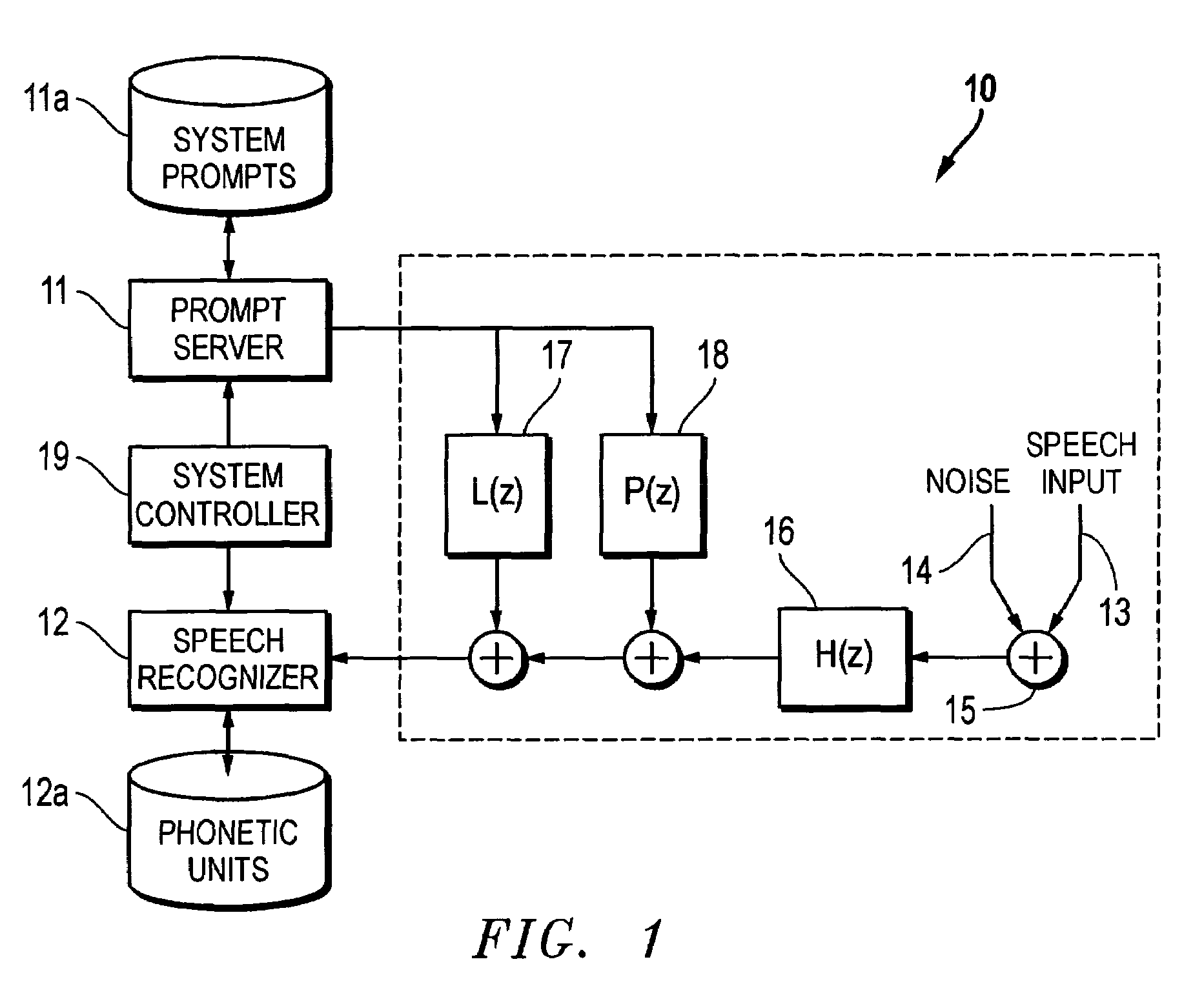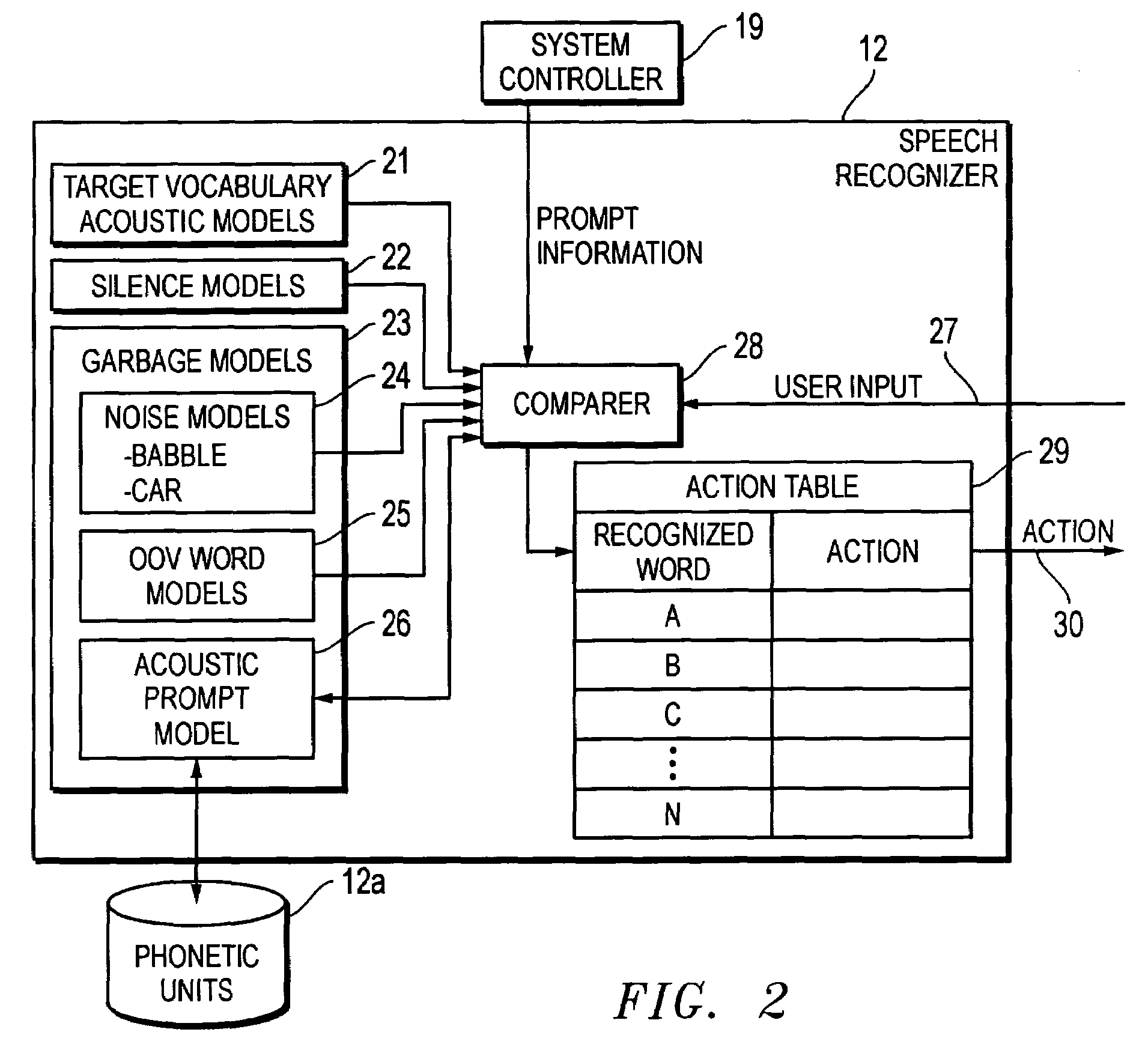System and method enabling acoustic barge-in
a technology of acoustic barge and acoustic barge, applied in the field of communication systems, can solve the problems of inability to detect speech recognizers, and inability to obtain temporal correlation, and conventional echo cancellation algorithms may provide a very weak attenuation of prompt echo, etc., to achieve the effect of suppressing speech recognition errors, improving word accuracy, and reducing likelihood
- Summary
- Abstract
- Description
- Claims
- Application Information
AI Technical Summary
Benefits of technology
Problems solved by technology
Method used
Image
Examples
Embodiment Construction
[0017]Contrary to traditional approaches utilizing an echo cancellation algorithm, the present invention generates an acoustic prompt model and utilizes the acoustic prompt model as a “garbage” model in parallel with the active vocabulary words of the speech recognizer to compensate within the recognizer for the acoustic echo of the prompt. A specific acoustic prompt model is generated from the announcement to compensate for the false alarms of the recognizer. Since the system prompt is typically announced using a single speaker's voice, a speaker-dependent acoustic model of the system prompt is preferably generated. In this process, the acoustic prompt model is trained using the speech signal of the specific system prompt, and thus represents the system prompt, including speech and any other sounds (e.g., beeps and the like) that are present in the prompt. Alternatively, a speaker-independent acoustic model of the system prompt may be generated. In this process, the orthographic te...
PUM
 Login to View More
Login to View More Abstract
Description
Claims
Application Information
 Login to View More
Login to View More - R&D
- Intellectual Property
- Life Sciences
- Materials
- Tech Scout
- Unparalleled Data Quality
- Higher Quality Content
- 60% Fewer Hallucinations
Browse by: Latest US Patents, China's latest patents, Technical Efficacy Thesaurus, Application Domain, Technology Topic, Popular Technical Reports.
© 2025 PatSnap. All rights reserved.Legal|Privacy policy|Modern Slavery Act Transparency Statement|Sitemap|About US| Contact US: help@patsnap.com



